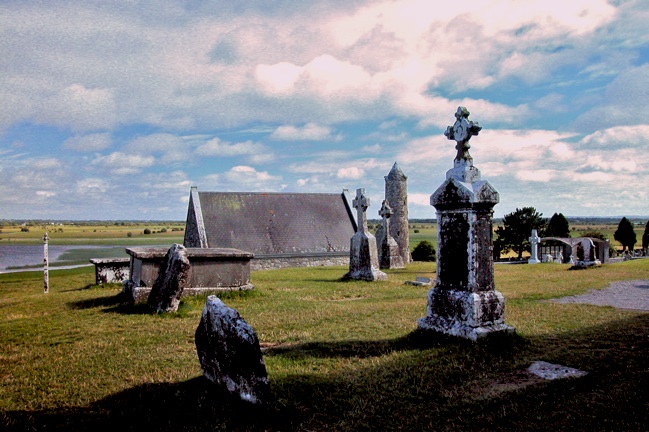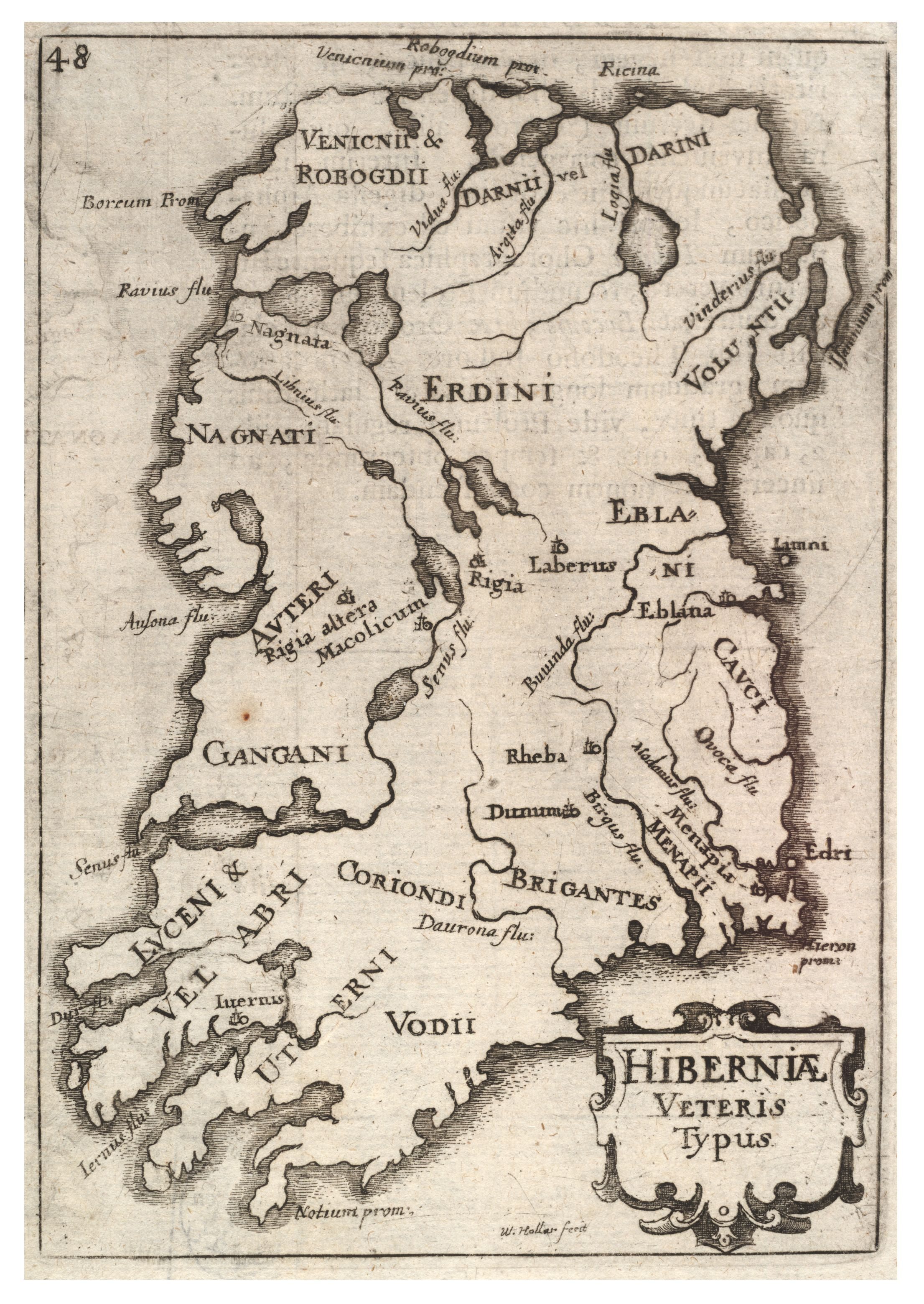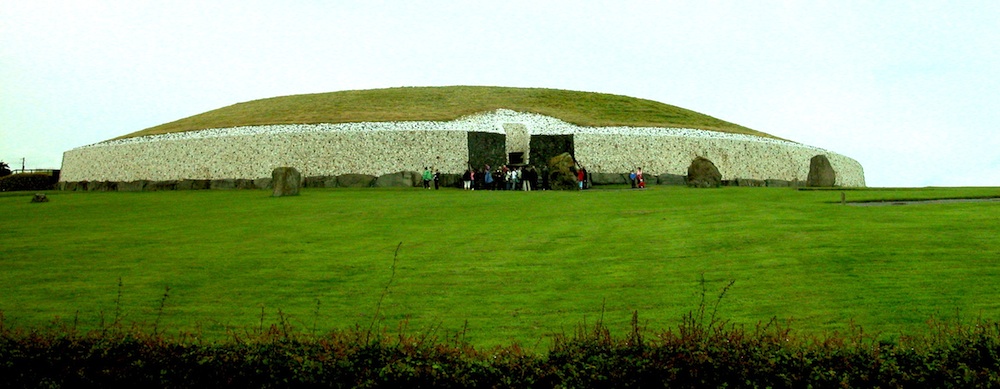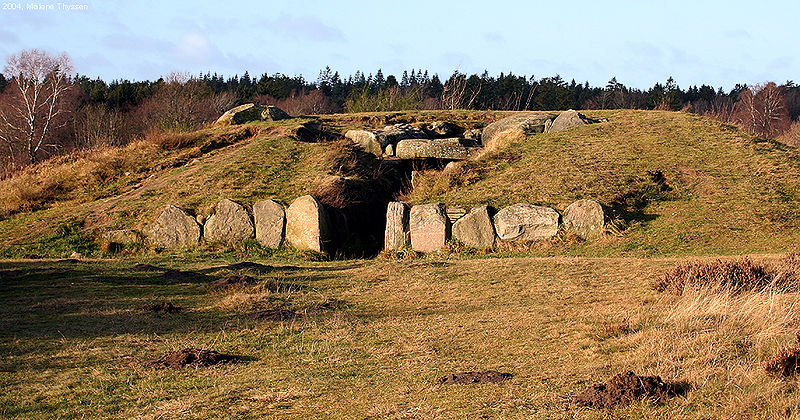Neolithic to Early Christian


Clonmacnoise was established by St. Ciaran Mac a tSaor ("son of
the carpenter") about 545AD. The monastery has extensive remains
of a cathedral, round tower, high crosses and several smaller
churches. Originally built of wood, the buildings were updated to
stone around the 9th century. It was located at a key crossing of
the river Shanon by the main road across Ireland from east to
west. It was one of the most important religious institutions in
Ireland in the 9th and 10th centuries. [Ireland.com] Its
importance and wealth also brought many attacks - 27 times by
Irish, 7 times by the Vikings, and 6 times by the Normans.
[wikipedia]

Original hunters and gathers of the British Isles, probably
walked in before the melting glaciers covered the exposed land
access to new territory with water. Receding glaciers also
made habitation of north Europe and Scandinavia possible with
tribes following game into the newly available lands after 10,000
- 12,000 BCE. Evidence has been found of human
occupied hunting camps after 8000 BCE. Original coastal camps have
long been buried under 410 feet by rising sea levels from the
receding glaciers covering previous land bridges. Before the
glaciers melted, hundred of years before the Romans, groups could
have walked from southern Scotland to Northern Ireland or from
Fishguard England to Wexford Ireland which is later cut off by the
Irish Sea. Neolithic farming practices didn't get established
until (4000-2500 BCE). The present island of Ireland had to be
approached then by boat.
Ireland has had a turbulent history much before the Vikings (see viking history) invaded and
settled on the island around 850. It had once been a rugged
tree covered wind-swept land in the north Atlantic.
Successive populations cut the trees for firewood, timber for
ships and buildings without allowing for regrowth to cover the
demands. Further clearing of the land for crops that
had to hold their place in the thinning or rocky soil frequently
eroded anything that remained while having to fight the short
growing season and terrible weather. The dolmen stone
structures and passage tombs such as Knowth and Newgrange (3200
BCE) are remnants of successful settlements. Newgrange is
older than Stonehenge and the Great Pyramids. It is not just
a passage tomb but also a celestial clock marked by the sun
hitting the rear of the passage on the Winter Solstice.

It's projected that the culture that developed here
during these thousands of years was what we now call Celts.
However, other similar dolmen, stone boat shaped tombs and stone
passage tombs such as Tustrup Jaettestue and Tustrup-dysserne
(3200 BCE) in Denmark have been discovered to have been
built about the same time.

Tustrup-dysserne, the largest passage tomb in eastern Jutland,
Denmark abt 3200bce
courtesy of Malene Thyssen, 2004
http://commons.wikimedia.org/wiki/User:Malene

There seems to be an obvious cultural connection between Ireland
and the main land even in prehistoric times, undoubtedly by
boat. There are many artistic similarities also in jewelry
and pottery. Trade and travel had to connect the cultures
before the Romans. DNA analysis has proved various groups coming
into the British Isles mostly from present day northern France and
southern Germany well before the Roman Empire of about 54 BCE. The
Roman identified this area as the tribe of Keltoi. The residents
of Britain and Ireland never called themselves Celts. It was
created as a descriptive word for the ancient language and culture
by Edward Lhuyd in 1707. [wikipedia.com] There
apparently has been, so far, no DNA remaining from the original
"Celts" in the British Isles discovered today which really begs
the questions of was there a Celtic group separate from the
Scandinavian, Gaelic and Germanic settlers. Settlements were
built, destroyed and rebuilt. Groups moved in and out of the
areas depending on weather, food resources, community aid and
freedom from pestilence and incursions. There is little
written history of Ireland before 800 CE. English historians
tended to write about their own control of the islands and the
establishment of English nobility. There are a few stories
of Irish chiefs doing battle against the early incursion of the
Vikings.
There are many known communities established in Ireland by the
Vikings after 800 CE. These included ones in Dublin,
Wexford, Waterford, Cork and Limerick. Since it is known
that the Angles, Saxons and Jutes came into Britain from the
Jutland peninsula of present day Denmark about 400 after the
Romans left. This is still comparatively recent history when
it comes to the British Isles. Language is also used to reinforce
the theories surrounding these migratory groups. There is a
major problem of vocabulary when it comes to describing these
different groups and where they originated. The Vikings were
known to have members from various northern areas - now known as
Norway, Denmark, Finland, Russia, Germany, Sweden, other Baltic
regions. Clare Downhan of the University of Aberdeen argues
that the ancient descriptions Dubgaill ("dark foreigner")
with 'Danes' and Finngaill ("Fair Foreigner") with
'Norwegians' is a purely modern interpretation of the ancient
texts. They get twisted by our own need for national
identity in various more contemporary writings and becomes
occasionally transliterated as Dubgaill becoming later a
family name of Doyle. Downham says, "David Dumville has
persuasively made the case that references to ‘Dark’ and ‘Fair’
foreigners in the ninth century refer to groups under different
leadership. The terms ‘Dark’ and ‘Fair’ may be interpreted to mean
‘New’ and ‘Old’ in a Gaelic context, rather than being ethnic
signifier." [Downham 155-156] At the time of the Vikings movements
there was no national separation of these people from the north.
She also argues that other descriptive phrases such as
"Hiberno-Norwegian" often associated with chaos and violence or
"Anglo-Dane" as being more peaceful and settled, have little basis
in history and even add confusion to attempts to understand the
complicated history of the settlement and movement of peoples in
the British Isles from Scandinavia. [Downham 167]
Scientist are attempting to understand the settlement patterns by
DNA tests of locals who have a history of continuous occupation of
a particular region. So far they seem to confirm the history
of Viking settlements with Scandinavian DNA surfacing in
many. Stontium isotope studies of 10c burials at Trelleborg
fortress during Harold Bluetooth's rein in Denmark shows that
Viking fortresses were inhabited by folks from areas around the
Baltic, southern Scandinavia, northern Germany, and Poland. This
would probably be also typical of Viking invaders. [Price]
The introduction of sheep grazing exacerbated the problems of the
short growing season and wet climate. The one crop that
seemed to grow particularly well here was the exotic south
American plant of the potato which became a prominent crop after
the 1600's. The seventeenth century Ireland "was utterly
wretched, and brokenhearted. Its agriculture was miserable,
and chronic scarcity alternated with actual famine; it had little
commerce, and no manufacturers, save the slowly increasing linen
manufacture of Ulster." [Hanna 621]
- Family Members -
Northern
Ireland (proved or suspected immigrants)
- Bothwell, Burns, Campbell,
Jones,
McDowell, Renwick, Graydon , Moon
Southern
Ireland - Spann
Elroy's History of the
Potato and the Famine || Norway
History including Viking Settlements in Ireland
Downham, Clare. ‘Hiberno-Norwegians’ and ‘Anglo-Danes’: anachronistic ethnicities and Viking-Age England", Dept of Celtic and Gaelic, School of Language and Lit., Univ. of Aberdeen, Old Aberdeen, AB24 3FX, UK
Christenson, Elroy - photo of "Cliffs of Moher", 2006. , Dolmen of Langdysse, Denmark 2016
Graydon DNA project, Dave Graydon administrator. 2008 http://www.familytreedna.com/public/gradengraydon/
Hanna, Charles. The Scotch-Irish or The Scots, Northern Britain, and Northern Ireland and North America. 1902. New York. Putnam. 1246 pp.
Irish: the Forgotten White Slave, Peoples Trust Toronto, 12/27/2014
Price, Douglas T. Who was in Harold Bluetooth’s army? Strontium isotope investigation of the cemetery at the Viking Age fortress at Trelleborg, Denmark. Academia, 2010. www.academia.edu
PRONI, "Public Records of Northern Ireland", Murray of Broughton Papers. Introduction. d2860-2pdf
Emigration Series:1, USA.pdf http://applications.proni.gov.uk
History Index || Elroy's Family Index || Ancestor Chart #1 || Early Irish History






All information and
photos included within these pages was developed by
the help of hundreds of researchers. The information
here is for the express purpose of personal
genealogical research and is freely offered as long as
this site is listed as a source. It may not be
included or used for any commercial purpose or
included in any commercial site without the express
permission of Elroy Christenson.
Copyright Elroy Christenson 1998-2016.